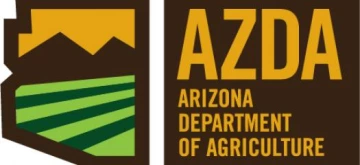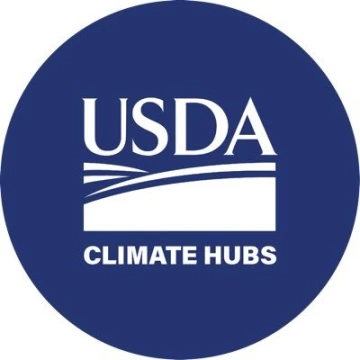< Back to Climate Viticulture Newsletter
Hello, everyone!
This is the March 2023 issue of the Climate Viticulture Newsletter – a quick look at some timely climate topics relevant to wine grape growing in Arizona.
February Recap | March Outlook | Start of the Growing Season | Extra Notes
A Recap of February Temperature and Precipitation
Monthly average temperatures were 3 to 5 °F below the 1991-2020 normal for much of the southern half of the state (dark blue and light purple areas on map), including all three Arizona AVAs. Much of the northern half of the state, particularly across the Colorado Plateau, saw temperatures more than 5 °F below normal (dark purple areas on map). For reference, monthly temperatures in February last year generally were within 2 °F of normal for the western half of the state and 2 to 6 °F below normal for the eastern half.
Area-average maximum and minimum temperatures during February 2023 were 56.6 and 30.6 °F for the Sonoita AVA, 57.2 and 29.9 °F for the Verde Valley AVA, and 58.5 and 30.4 °F for the Willcox AVA. Respective February normals are 61.2 and 33.2 °F, 61.6 and 32.9 °F, and 63.1 and 32.7 °F.

Jeremy Weiss
February precipitation totals were less than 75 % of normal for most of the western half of the Arizona, including the Verde Valley AVA (light yellow, dark yellow, and orange areas on map). For most the eastern half, including the Sonoita and Willcox AVAs, near-normal amounts characterized the month (white areas on map). Totals for a few areas of the state, such as in northeastern and extreme south-central Arizona, were 125 to 200 % of normal (light aqua, aqua, and dark aqua areas on map). Precipitation during February 2022 was less than 50 % of normal for much of the state.
Area-average total precipitation in February 2023 was 1.32 inches for the Sonoita AVA, 0.87 inches for the Verde Valley AVA, and 0.84 inches for the Willcox AVA. Respective February normals are 1.12, 1.43, and 0.93 inches.
Based on the daily weather summaries since November for the AZMet Bonita and Willcox Bench stations in the Willcox AVA, precipitation last month brings dormant-season totals at these locations to 3.58 and 2.76 inches, respectively. Total reference evapotranspiration during the November-January period nonetheless remains higher, with respective values of 9.8 and 10.1 inches, illustrating a need for attention to winter irrigation and to issues like delayed spring growth.
Dig into daily weather summaries from 2023 for the AZMet Bonita and Willcox Bench stations in the Willcox AVA
Learn more about PRISM climate data

Jeremy Weiss
The Outlook for March Temperature and Precipitation
Temperatures over the course of this month have a slight increase in chances for being below the 1991-2020 normal across almost all of Arizona (light blue and blue areas on map). The outlook is different only for southeastern Arizona, where there are equal chances for below-, near-, or above-normal temperatures (white area on map). Monthly temperatures in March last year were within 2 °F of normal for much of the state.
Area-average maximum and minimum temperatures during March 2022 were 67.3 and 36.0 °F for the Sonoita AVA, 70.2 and 36.4 °F for the Verde Valley AVA, and 69.3 and 34.1 °F for the Willcox AVA. Respective March normals are 67.1 and 36.9 °F, 68.0 and 37.6 °F, and 69.4 and 37.1 °F.
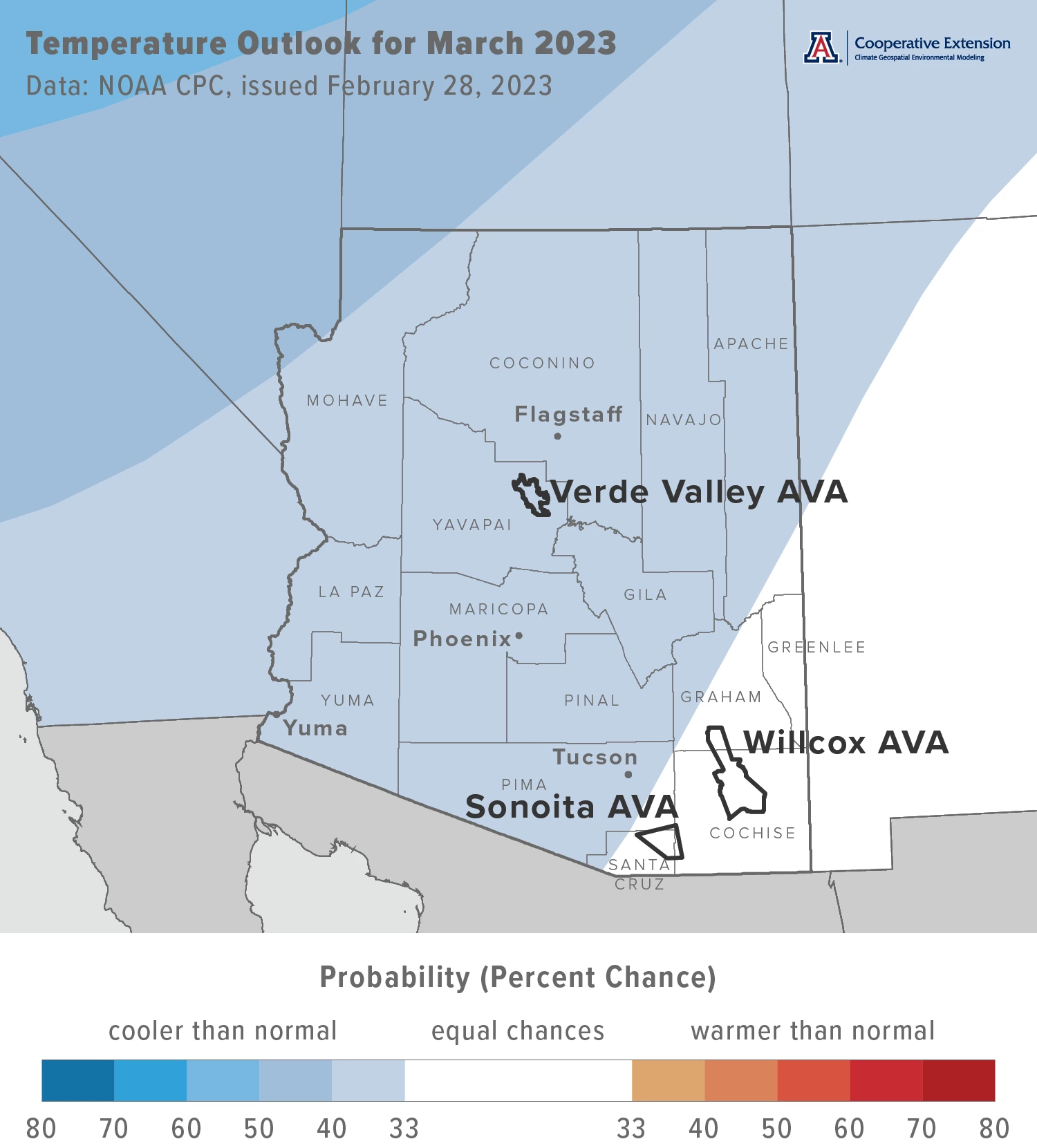
Jeremy Weiss
Precipitation totals for this month have a slight increase in chances for being above normal across the entire state (light aqua and aqua areas on map). Precipitation during March 2022 was less than 50 % of normal for much of the southern and western halves of Arizona. Some areas, like the Sonoita and Verde Valley AVAs fared marginally better with amounts 50 to 100 % of normal. Only a few locations in northwestern Arizona managed above-normal totals.
Area-average precipitation totals in March 2022 were 0.89 inches for the Sonoita AVA, 0.82 inches for the Verde Valley AVA, and 0.33 inches for the Willcox AVA. Respective March normals are 0.97, 1.31, and 0.76 inches.
Although the rare La Niña three-peat this winter finally is fading away and losing its grip on the storm track, other influences on the jet stream like the Madden-Julian Oscillation look to have unsettled conditions continuing to hang around the Southwest, at least for the first half of March. One of the bigger questions this raises is how heat accumulation responds in the coming weeks and sets up bud break and the start of the growing season this spring. We look at where chill and heat accumulation are at this point in the dormant season in this context in the next section.
To stay informed of long-range temperature and precipitation possibilities beyond the coverage of a standard weather forecast, check in, too, with the six-to-ten-day outlook and eight-to-fourteen-day outlook issued daily by NOAA’s Climate Prediction Center.
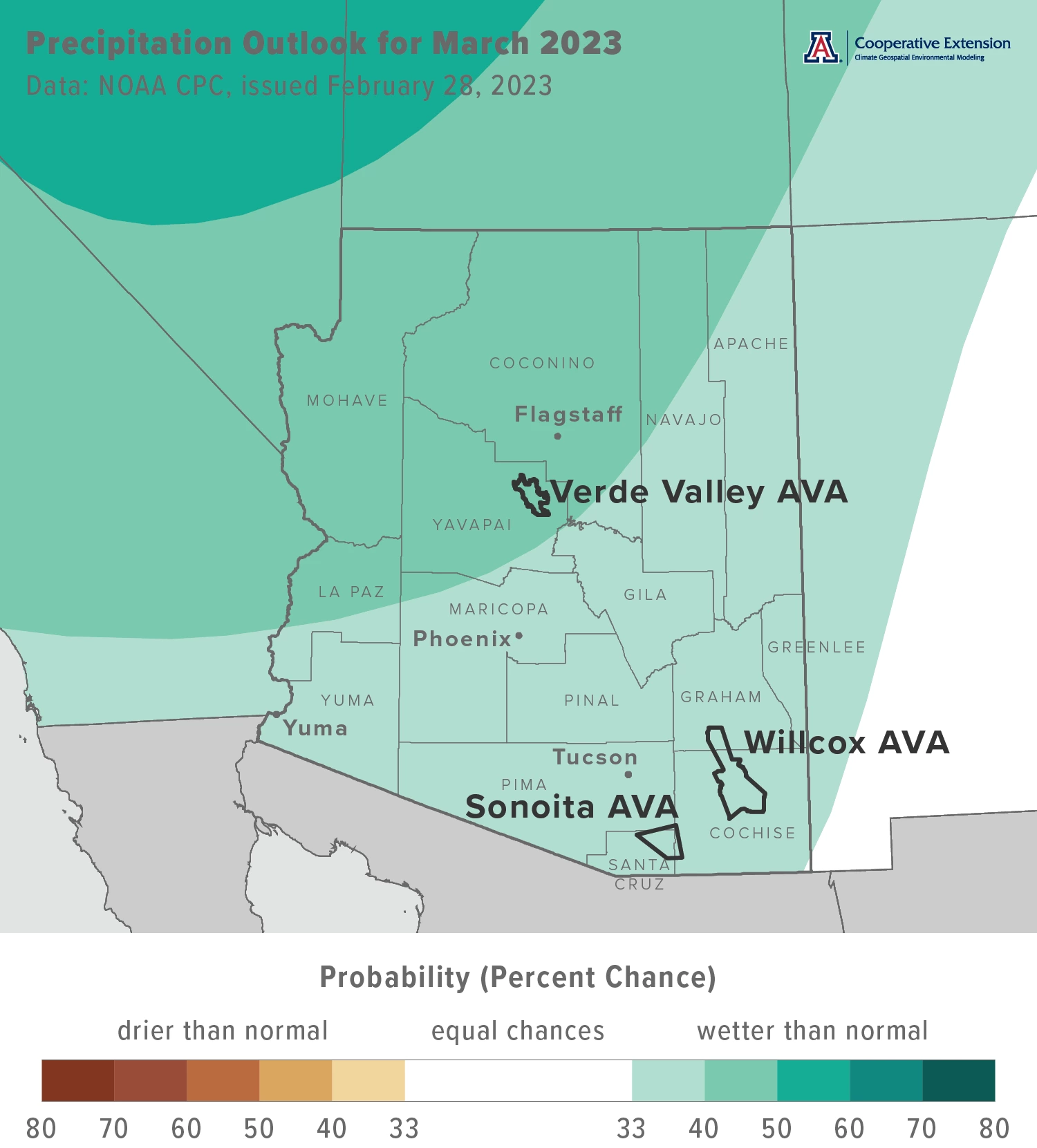
Jeremy Weiss
Vine Dormancy and the Start of the Growing Season
Although it’s been about a year since we last dug into this topic, you’ll likely recall that deacclimation kinetics are related to how chill accumulation, dormancy state, and temperature affect the loss of cold hardiness and timing of bud break in grape vines. It also is an explanation for why relatively lower (higher) heat accumulation is needed for vines to start the growing season during winters with relatively higher (lower) chill accumulation. In previous spring newsletter issues, we leveraged this relationship between these two measures related to vine dormancy with past ‘analog’ years to estimate when bud break might occur. Now that it’s March, we’ll once again dig in.
Temperature conditions at the AZMet Willcox Bench station in the south-central part of the Willcox AVA so far this dormant season have resulted in cumulative chill portion values that are relatively high and most similar to those from winters 2018-2019 and 2019-2020 (tan, blue, and pink lines in top graph, respectively). Current cumulative growing degree day values are relatively low and most like those from those two winters, as well as those from winters 2020-2021 and 2021-2022 (green and yellow lines in bottom graph, respectively).
Based on this, timing of bud break in 2023 looks on track to be most like that from springs 2019 and 2020, and earlier than springs 2021 and 2022, at least at this location.
To continue tracking chill and heat accumulation during the month, visit our related early-stage, interactive web application that updates daily.
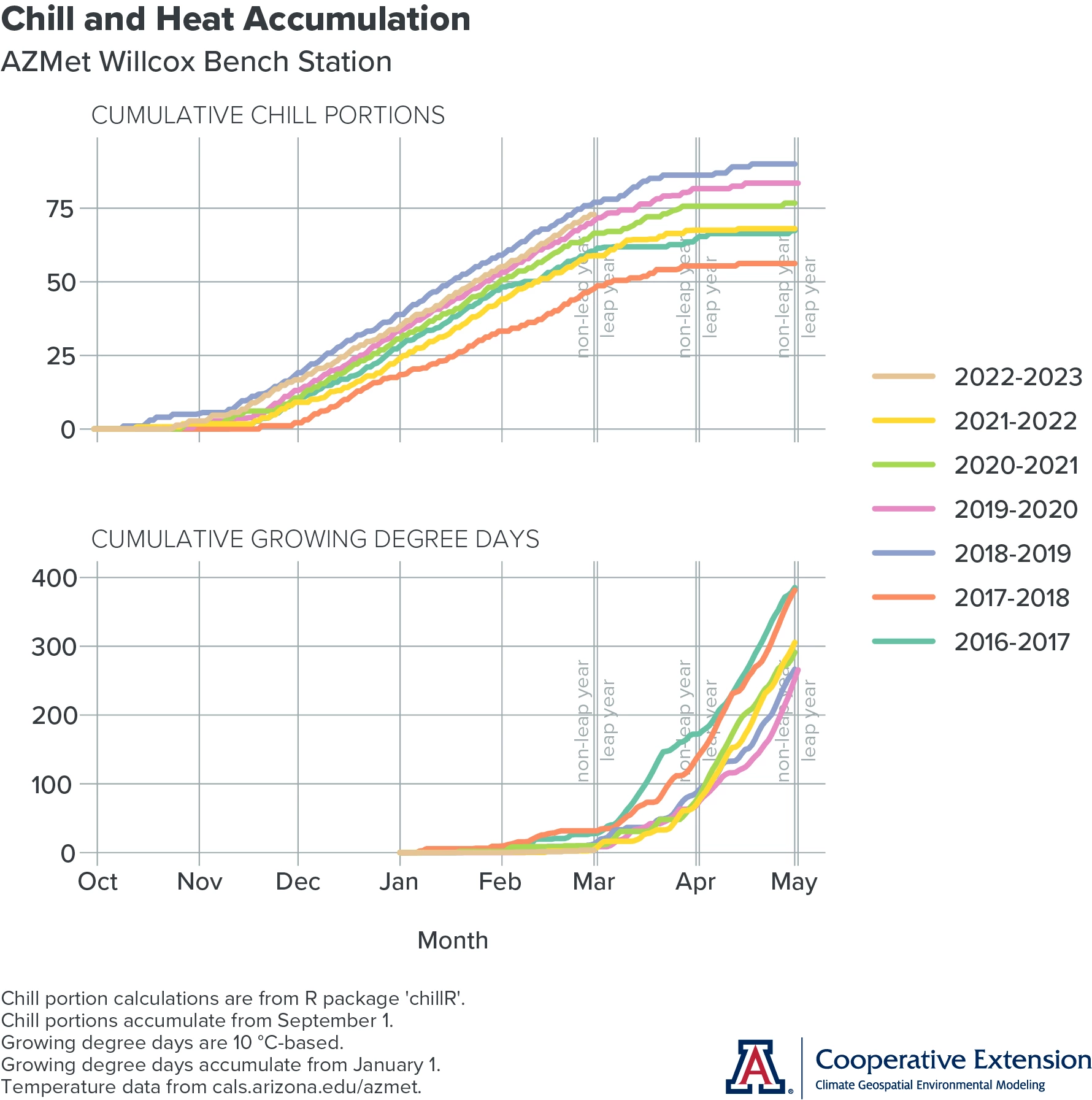
Jeremy Weiss
Extra Notes
Attention all growers, viticulturists, and vineyard owners! University of Arizona Cooperative Extension is conducting a Statewide Viticulture Needs Assessment and needs your help. Topics will include production, irrigation management, soil fertility, and management of pests, pathogens, and disease, among others. Your anonymous feedback is essential and will inform Cooperative Extension as to how it can best serve the wine grape industry. Please click here to access the survey, and contact Matt Halldorson, Yavapai County Director and Associate Agent in Agriculture and Natural Resources with Cooperative Extension, with any questions.
For those of you in southeastern Arizona, including the Sonoita and Willcox AVAs, Cooperative Extension manages an email listserv in coordination with the Tucson forecast office of the National Weather Service to provide information in the days leading up to agriculturally important events, like spring freezes and high-wind days. Please contact us if you'd like to sign up.
And for those of you in north-central and northeastern Arizona, including the Verde Valley AVA, Cooperative Extension also now manages an email listserv in coordination with the Flagstaff forecast office of the National Weather Service to provide similar information for this part of the state. Please contact us if you'd like to sign up.
Undergraduate students in the College of Agriculture and Life Sciences at the University of Arizona are looking for internships with businesses and companies in the viticulture and winery industries. Please contact Danielle Buhrow, Senior Academic Advisor and Graduate Program Coordinator in the Department of Agricultural and Resource Economics, for more information.
Please feel free to give us feedback on this issue of the Climate Viticulture Newsletter, suggestions on what to include more or less often, and ideas for new topics.
Did someone forward you this newsletter? Please contact us to subscribe.
Have a wonderful March!
With current and past support from:
